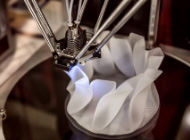
Many people believe that making 3D prototypes is an easy task. The fact is that 3D printing is difficult and countless mistakes and errors will occur in the process. In order to create seamless 3D printing prototypes, technical knowledge and specific skills are always required.
An error or mistake on your 3D prototypes can lead to different outcomes such as a poor resolution, missing faces, geometric inaccuracies and much more. To avoid unnecessary errors when it comes to 3D printing, it is crucial to know the common mistakes that may have encountered in 3D printing.
1. Lack of material guideline
Before starting 3D printing, choosing the right materials in 3D printing is necessary. There is a wide range of material options in 3D printing. It could be nylon, ABS, resin, ceramic and many more.
All the materials have various qualities such as stiffness, brittleness, solidity, flexibility, etc. Thus, during the designing process, it is vital to consider these qualities because in every technology of 3D printing, there is a specific type of material being used.
Take ceramic material as an example. There are specific material-related recommendations that should be considered such as rounding off corners, overhanging parts, etc. Choosing the appropriate printing material presets the basic guidelines in designing.
The material should also be appropriate to the application used to have successful outputs.
2. Incorrect printing technology used
3D printing uses different printing technology depending on the materials used. For instance, materials such as ABS, Alumide and Polyamide are impossible to print together. In this case, various printing technologies are required to make it happen.
For plastic and alumide materials, Fused Deposition Modeling (FDM) technology or Selective Laser Sintering (SLS) technology are used. For resin or wax materials, techniques such as Stereolithography (SLA), Digital Light Processing (DLP) and multijet printers are used.
3. Failing to consider the file resolution
The most common file format for 3D printing is STL (Standard Triangle Language). Basically, STL means that the design is rendered into triangles in a 3D space. When providing the STL file, it is important to choose the right resolution for the file. Picking the appropriate resolution will result in a good quality print.
When the file resolutions are too low, it means that the triangles are too big. This will result in a uneven print. Moreover, it will lead to a “pixelated” print.
On the other hand, if the STL file has a very high resolution, it will be difficult to handle and upload the file. Likewise, it may also contain a great level of details that other 3D printers cannot print.
When exporting an STL file, it is advised to choose a tolerance of 0.01mm to have a good export.
4. Faulty STL files
Working with STL files can be a little bit tricky because it represents the outer surfaces of the 3D model which creates the mesh of points, faces and edges and defines the internal volume of the model.
Apart from poor resolution, an error in the STL file can result in problems such as bad boundary edges, intersecting faces, non-manifold edges and over-refined mesh.
To solve this, make sure that the STL files are fixed using an exclusive 3D printing software like Netfabb and Meshmixer. It is also advised to repair the issue in the native CAD software first before exporting it to STL file. Furthermore, see to it that the STL file is correctly designed and exported.
5. Incorrect wall thickness
Wall thickness is defined as the thickness or the distance between the surface of the model and its opposite surface. The model should have a minimum wall thickness at any time.
Incorrect wall thickness can end up with mistakes and issues in 3D printing such as unable to print and items could crack and break off easily. Factors which includes size, alignment and overall design of the 3D model can influence the suggested wall thickness.
6. Machine not properly set-up
Often than not, the reason why there are mistakes in 3D printing is the falure in machine. Problems such as out of filament, nozzles not working, etc. may cause the issues. Therefore, it is important to set up the 3D printer properly before using.
While some 3D printers are pre-calibrated, other printers need to adjust its setting to function well. Make sure to read the instruction manual to set up the equipment correctly beforehand.
Conclusion
3D printing may not be as easy as you think. It requires some special skills and enough practice to master it. If you encounter any of the mistakes mentioned above, it means that there is something wrong with the printing procedure or with the 3D printing equipment.
With sufficient knowledge and proper training, errors or mistakes in 3D printing can be minimised. The quality of the 3D prototypes can be enhanced and mistakes can be avoided with the help of a few tips and recommendations from 3d printing expert and some trial and error by yourself.
Improving the quality of the 3D printed parts is achievable if you choose to outsource 3D printing services to a reliable 3D printing company. They have skilled engineers and designers who ensure that your 3D prototype jobs are in safe hands.








